Last summer I did some major cutback on a Rocky Mountain juniper (see “Initial styling” for details).
I repotted the tree over winter and let the tree grow freely all year. Here’s what it looked like in early fall this year.

Rocky Mountain juniper in a container by Jan Rentenaar
As you can see, the tree responded well to the work and is now ready to be styled. The first step was to thin the young branches that emerged in dense clusters (thanks for the help with this Dave!).
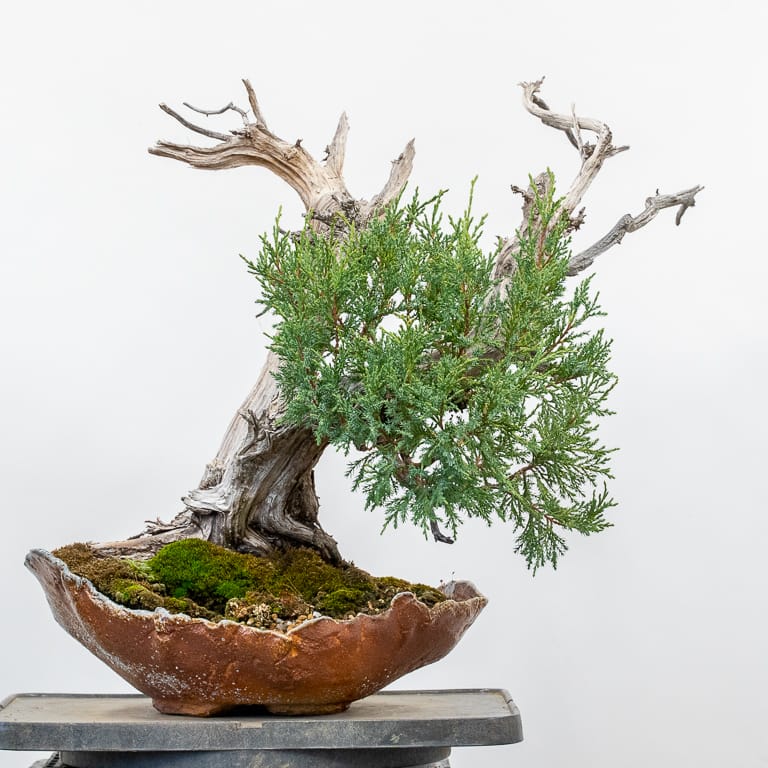
After thinning crowded shoots
Rocky Mountain junipers can produce lots of shoots at select nodes. Over time these nodes can swell. While this is unattractive for living branches, the nodes can create interesting deadwood.
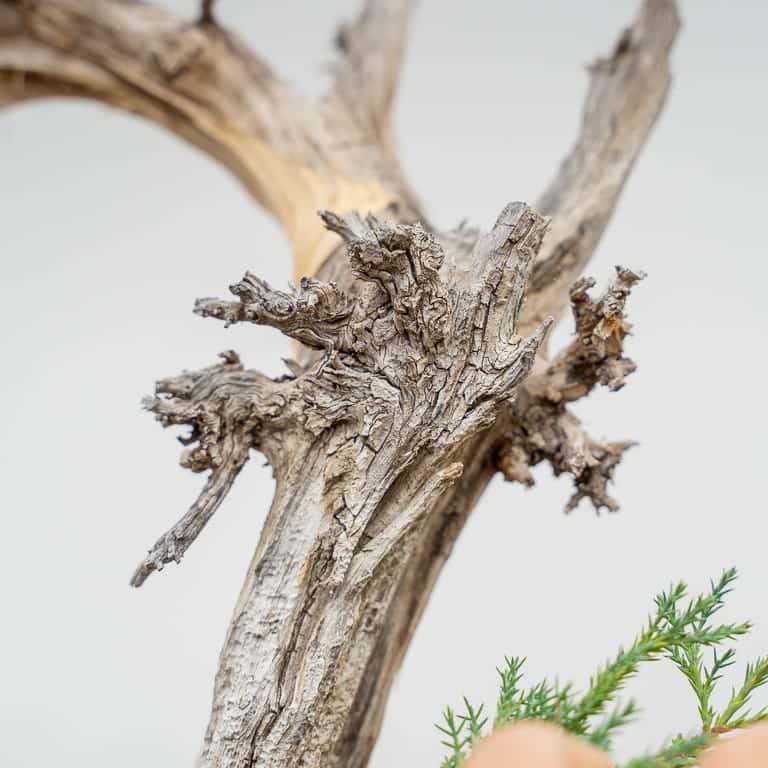
Deadwood created by many years of shoots growing in the same spot
Because most of the branches are young, the wiring was straightforward. The goal is to reposition the vertical shoots in a more horizontal fashion so they can start to form the future primary branches of the tree.
I did little pruning at this point as I want to let the branches run for a while, but I did thin a few crowded areas and shorten some of the longest shoots.
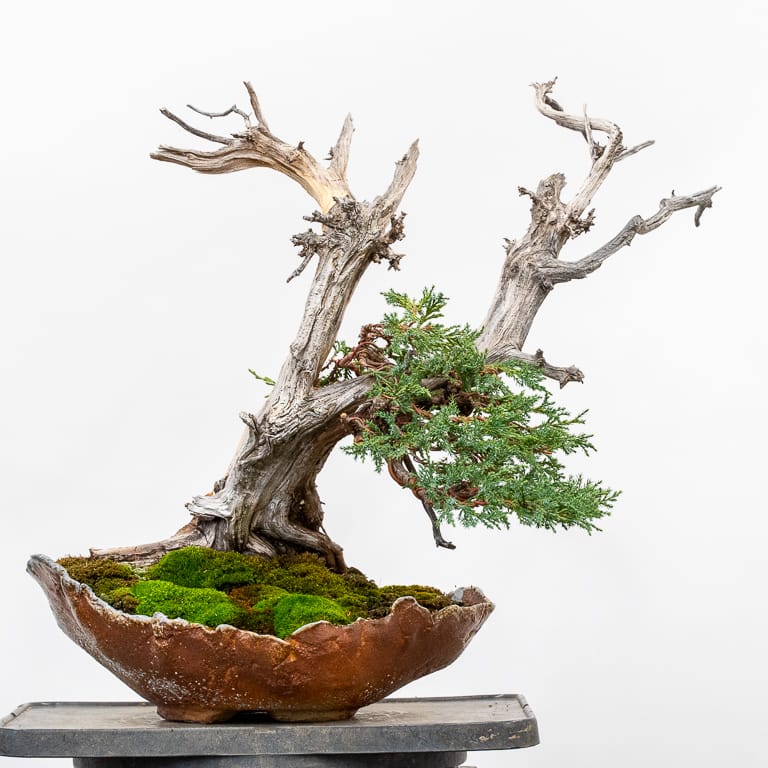
Rocky Mountain juniper – 16″ tall
I plan to let the tree grow freely through next summer as I want the outline of the foliage to be bigger and the primary branches to be thicker. From there, the focus will be on developing branch pads.
Here’s a look at the tree from the right side.
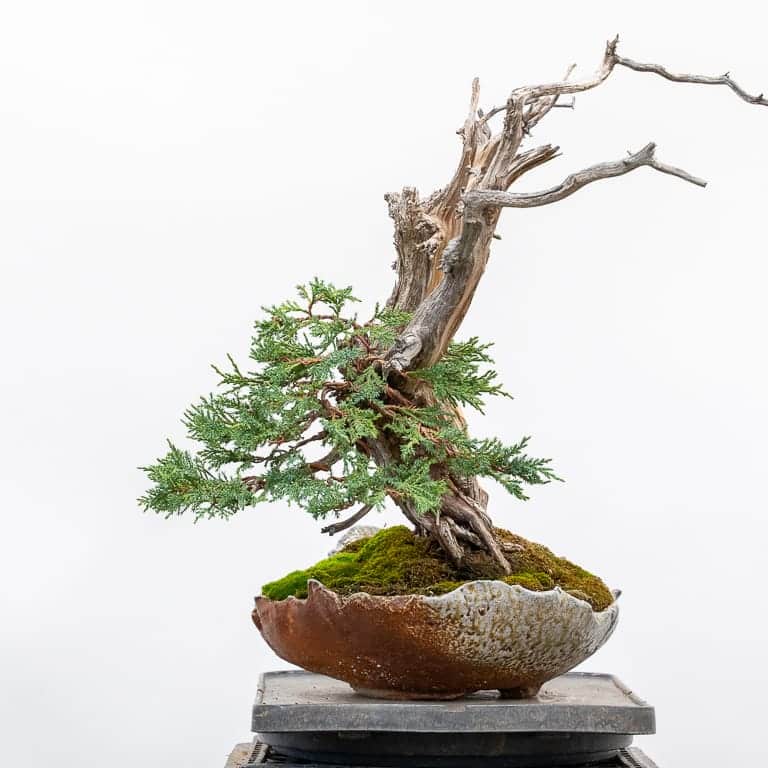
Right side
And here’s the view of the back before and after wiring.
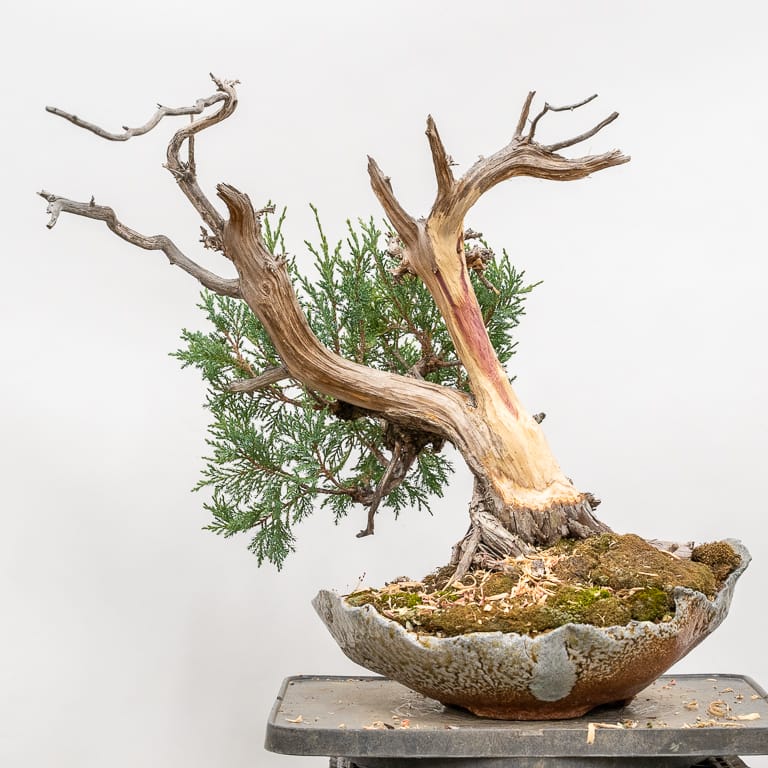
Back – before wiring

After wiring
New Resource on Bonsai Tonight: Top Guides and How-to Articles
I’ve collected links to the most popular posts and articles written over the last ten years on a single page for easy browsing. Topics include a beginner series, an in-depth look at long-term development strategies, and key techniques for pine bonsai, among others. You can find a link to the guide on the home page or visit it directly at:
Bonsai Guides
Subscribe to Bonsai Tonight
New Posts Delivered Every Tuesday and Friday
Mark says
Yet another example of firewood decorated with some greenery.
I don’t understand people who like firewood in bonsai merely because some book said that it was desirable.
Jonas Dupuich says
Ha, I can see where you’re coming from. What kind of bonsai would you like to see more of?
Jesse Strong says
You’re a patient man, Jonas….admirably so.
Jonas Dupuich says
Ha – thanks, Jesse!
Chris Cosenza says
I see your need to be diplomatic, Jonas, but I couldn’t disagree more with the person who called it firewood. This is EXACTLY what these trees grow like in nature and the whole goal is to make the tree resemble that. Bravo. Love this. Thanks for your tireless work ethic and education.
Jonas Dupuich says
Thanks so much Chris, I really appreciate it! It can be a challenge to evoke the characteristics we find in nature but I find that’s half the fun of it.
Mark says
Bonsai is not copying “EXACTLY what these trees grow like in nature”. If it were (merely) that, it would’ve been doomed from the start: no tree in a pot can be what it would’ve been if it had grown in nature.
So: bonsai is what people want it to be.
And some people just don’t know better than to pimp potted trees up.
Jonas Dupuich says
I’d take that one step further – if we take a tree from nature and pot it exactly as we find it, it doesn’t say much as a bonsai. Put another way, it would feel like half of a conversation. I’ve always been interested in the characteristics that develop as people interact with their trees over time regardless of the tree’s origin.
I’m not sure who or what you’re referring to in your latter comment – or who gets to define what it means to “know better” – but I’m open to constructive suggestions for how to improve the trees I work on.
Daniel Caballero Diaz says
Excelente trabajo
Jonas Dupuich says
Thanks Daniel!
James Horine says
Hi Jonas, Can you tell me if you can grow Rocky Mountain Junipers as Bonsai down in the San Diego area or do they need more cold in the winters to do well? Thanks for your great articles to, actually a double thanks!!
Steve Warburton says
Hey Jonas! Thanks for putting together that Guide. Great compendium of articles from you and other helpful resources. One other area that people may find useful is a list of suggested books on bonsai. For me, they have been an invaluable resource for studying examples of fine bonsai and though many were written long ago the information on training still stands up. Soil composition and fertilizing preferences may have changed but wiring, training techniques, and other segments still are relevant.
A few I’ve found particularly helpful or inspiring:
The Art of Bonsai by Yuji Yoshimura
Four Seasons of Bonsai by Kyuzo Murata
Classic Bonsai of Japan Nippon Bonsai Assoc
Bonsai Techniques 1 (and 2) by John Naka
Forest, Rock and Ezo Spruce by Saburo Kato
Saikei: Living Landscapes in Miniature by Toshio Kawamoto (Great info on young bonsai training incld the art of Saikei)
Bonsai Maples by Andrea Meriggioli is a modern book and great achievement
I’m sure there are many others that can be added to the list as well. There are still several books on my hit list to get including yours and Michaels.
Jonas Dupuich says
Thanks, Steve! I’ve been wanting to do a guide to bonsai books for years and this is good encouragement – and a good starting point – as I haven’t read all of these. Will keep reading!
Mark says
>if we take a tree from nature and pot it exactly as we find it,
>it doesn’t say much as a bonsai.
I don’t think “saying” is what we want from a bonsai. It is about showing. If you rip off almost all the bark then this is everything this bonsai will ever show. It will not grow it back. Not unless you’re experienced enough botanically to grow a cell-culture and stick it back on.
>but I’m open to constructive suggestions for how to improve
>the trees I work on
OK. Don’t make them “deader” than they are. Bonsai/trees are living creatures. Otherwise they would be statues.